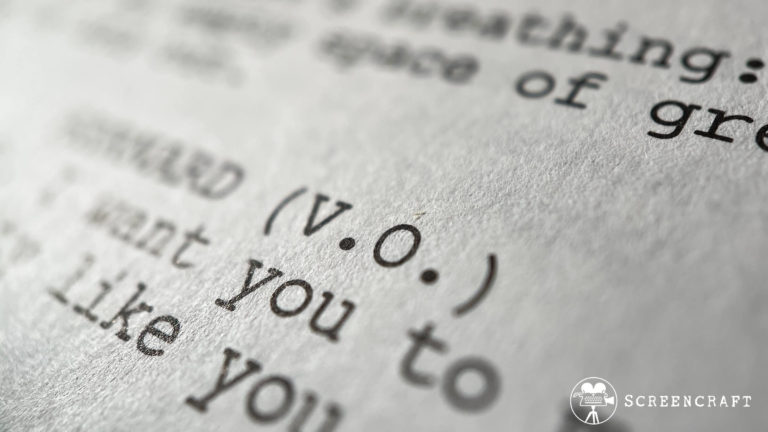Everything You Need to Know About Artifacts of Attraction

We all know what it’s like to be completely and utterly obsessed with something.
Maybe it’s a particular pen that fits just right in your hand, the last DVD for a carefully curated collection, or a script signed by a beloved writer/director.
If we were characters in a screenplay, any of these things could serve as an Artifact of Attraction, a plot device that creates obsession so strong it actually affects the plot of the story.
Let’s take a look at what makes an artifact of attraction such a powerful storytelling tool, but before we do, what's a plot device, anyway?
What Is a Plot Device?
Every so often a writer just needs something to move the plot of their story forward. Plot devices are handy storytelling techniques that do just that.
What is an Artifact of Attraction?
The definition of Artifacts of Attraction is in the name itself. These objects are attractive to characters, so much so that the desire to possess or protect them fuels the plot.
Whether magical or mundane, these objects have an undeniable allure. Characters are fascinated by, obsessed with, or passionate about Artifacts of Attraction to the extreme.
Consider Davy Jones’ heart in the second Pirates of the Caribbean movie or the Facebook IP in The Social Network, both of which are Artifacts of Attraction. One is magical, one mundane to the extent that it’s an idea, not an object.
The key element in determining whether an object is an Artifact of Attraction or not is desirability.
While any old object can be desirable to a single person for personal reasons, Artifacts of Attraction are valued and sought after by many. This is how the Artifact of Attraction affects the plot.
Before we move on, it’s important to note that there is some crossover in plot devices here. If the object will hurt a character mentally or physically, it can serve double duty as an Artifact of Attraction and an Artifact of Doom.

Davy Jones' heart | Pirates of the Caribbean: Dead Man's Chest
Why Artifacts of Attraction Work
While a story centered around an object incredibly valuable to one person could be deeply profound, that object doesn’t function as an Artifact of Attraction in relation to the plot.
Like I said before, an Artifact of Attraction only works if more than one person wants it.
Sometimes that’s as simple as having two people fight over it, other times many different groups and individuals are involved in the quest.
Artifacts of Attraction produce conflict between characters because of their monetary, magical, or inherent value.
Characters will race to be the first to obtain or destroy these objects, battle each other to control these objects, or start wars to stop the bad guy from using these objects.
The effort to do those things and the conflict that comes with that struggle is why this plot device works so well.
More Plot Devices: Everything You Need to Know About Artifacts of Doom
Case Studies
Now that you’re obsessed with Artifacts of Attraction, let’s explore a few examples.
The Artifact of Attraction In National Treasure
On a dark, stormy night, a grandfather tells a young boy about a secret passed down through their family over many generations.
“What was the secret?” the boy asks in reverence.
“A treasure,” the grandfather replies. “A treasure beyond all imagining.”
This is when Ben Gates’ quest for the Templar’s Treasure began. His obsession with this elusive Artifact of Attraction is what fuels the adventure at the heart of National Treasure.
The search for the Templar’s Treasure creates the entire plot of the film, and Ben’s unrelenting fascination with it actually pulls other characters into the action — his sidekick, love interest, enemy, and even the director of the FBI.
As an Artifact of Attraction, the Templar’s Treasure works because it functions on various levels of value — it is of great personal value to the protagonist, immense financial value to the antagonist, and incredible historical value to the world.
It doesn’t hurt that it’s been missing for centuries, a mystery that gets every audience member invested since we don’t know what exactly the treasure is and desperately want to find out.
The Artifact of Attraction In The Lord of the Rings
If you know only one thing from Lord of the Rings, it’s Gollum’s oft-repeated phrase: “My precious.”
His precious is, of course, the One Ring, the Artifact of Attraction at the center of the fantasy series.
As Artifacts of Attraction go, the One Ring is of the magical variety. (It also functions as an Artifact of Doom, but you can read about that later)
Sauron helped create the Rings of Power, but then secretly forged the all-powerful One Ring in the fires of Mount Doom. He kept the ring for himself, but because he infused the ring with his own power, he ultimately became dependent on having it in his possession.
Long story short, the One Ring ended up with Bilbo Baggins and the adventure began.
The One Ring is also special in that its evil magical power allows it to manipulate and corrupt anyone who encounters it, so much so that they turn into crazy cave-dwellers named Gollum.
The quest to find or destroy the One Ring fuels the major characters and sustains not just one movie, but an entire series.
Other Examples of Artifacts of Attraction
- The Holy Grail in Indiana Jones and the Last Crusade
- The Elder Wand / Deathly Hallows in Harry Potter
- Facebook Intellectual Property in The Social Network
- Davy Jones’ heart in Pirates of the Caribbean: Dead Man’s Chest
- The titular lost city in Atlantis: The Lost Empire
- The Sword of Kahless in Star Trek
Should You Use an Artifact of Attraction in Your Story?
All things considered, Artifacts of Attraction are pretty rare. This plot device won’t work in every story and should be used with care.
If you’re going to include an Artifact of Attraction, make sure to adhere to the following elements:
- The object should be so valuable it inspires obsessive behavior
- The object must be desirable by multiple characters
- The object causes something to happen within the plot of the story (usually a quest or race)
Keep in mind that Artifacts of Attraction are integral to the stories they inhabit. If you can remove the object with no change to the overall story, it’s not an Artifact of Attraction.
Finally, if possible, try to add an extra layer of value like in National Treasure. If you can create obsession for the audience as well, you know your Artifact of Attraction is firing on all cylinders.
Artifacts of Attraction are shiny but tricky. While this plot device can be very attractive for screenwriters, it should only be used if it truly helps move the story.
Like with the comparable Artifact of Doom, if your story has one or needs an Artifact of Attraction, you’ll know.
---
Check out our other plot device breakdowns from this series here!
 Britton Perelman is a writer and storyteller from the middle of nowhere, Ohio. She’s had jobs in travel writing, movie trailers, and podcasting, and is currently getting her MFA in Screenwriting at the University of Texas at Austin. When not writing, Britton is most likely belting along to Broadway musical soundtracks, carefully making miniature bookshelves, or napping with her dog, Indiana Jones. Find more of her writing on her website or follow her on Instagram.
Britton Perelman is a writer and storyteller from the middle of nowhere, Ohio. She’s had jobs in travel writing, movie trailers, and podcasting, and is currently getting her MFA in Screenwriting at the University of Texas at Austin. When not writing, Britton is most likely belting along to Broadway musical soundtracks, carefully making miniature bookshelves, or napping with her dog, Indiana Jones. Find more of her writing on her website or follow her on Instagram.
Get Our Screenwriting Newsletter!
Get weekly writing inspiration delivered to your inbox - including industry news, popular articles, and more!




























